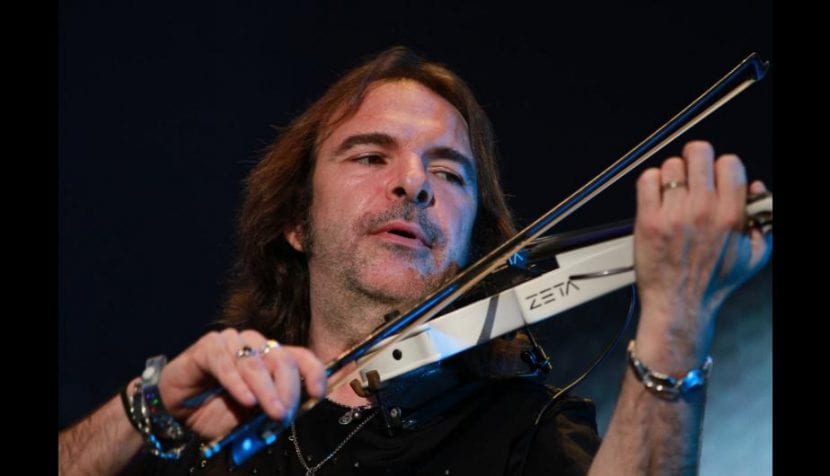
Celtic music is a extensive musical variety that arises as a result of different melodies of the peoples that have been living with the Celtic folklore of Western Europe.
There is no absolute definition of what is "Celtic”, Or some parameters that absolutely delimit what we know as“ Celtic music ”.
Under this denomination they have been encompassed different popular music from certain geographical areas and a whole set of modern rhythms starting from a traditional base with musical and ethnological principles.
Ireland, Scotland
Can be attributed two meanings to celtic music: on the one hand, the music "of the peoples", with different origins; and secondly the music from the Celtic nations. Both concepts are usually combined in the musical compositions that we can hear from interpreters who are dedicated to these styles.
In his analysis, this type of music comes from very different places. Celtic music Spanish, Scottish or Breton (the best known) sound very different to each other. Some experts assure that there is a relationship between them.
We often attribute this term to music that has come down to us from Ireland and Scotland. These styles have had a great influence in parts of the world such as the United States, as is the example of bluegrass and country and other trends in music today.
Other examples of Celtic music
Traditional musical songs from other regions of the world, such as Wales, the Isle of Man, and in Spain Galicia, Asturias and Castilla León they have also been labeled as Celtic music, although their traditions have not had much to do with the historical Celtic movement.
This movement, romantic and folkloric part on many occasions of various cultural minorities. Its maximum expression is seen in the various Celtic music festivals that take place on different dates throughout the year, coinciding many times with different traditional festive celebrations.
The most used instruments in Celtic music
There are lots of documentation about the instruments which have traditionally been associated with Celtic music.

The bagpipe, in Spain, is one of the best known and most used instruments to play this kind of music. We find it in the traditional music of Galicia and Asturias.
The violin It is another of the instruments associated with this type of music, especially in the Irish one. They are medieval instruments that little by little were incorporated into the cultural development of this interesting town, the Celts. And that today are collected by musicians and historians.
Other lesser known instruments that are also part of this musical style are the bodhran and the bombard. In the first case, it is a drum that is struck vertically. The interpreter is seated and supports the bodhran on his knees. For a long time forgotten, this instrument has been recovering, as a result of the current interest in Celtic rhythms.
In the case of the bombarda, is a wind instrument very similar to the best known dulzaina, which is historically included in Breton music.
Another instrument of "Celtic" origin is the celtic harp, widely used throughout the Celtic world from Ireland, to Britain, Scotland and Wales. In the case of Wales, we know the so-called “triple harp”.
Celtic music today
As with other traditional genres, Celtic music has had and continues to have a lot of influence on artists, singer-songwriters and groups of different styles and musical fields.
Although it is not clear that in all these cases the adjective "Celtic" can be used to musical production of well-known names in the music scene, the diffusion and interest in Celtic music has made its extension possible.
As traditional interpreters it is necessary to emphasize Irish group Celtic Woman, specialized in making versions of very popular classic songs, such as “Amazing Grace”. In Spain we all remember the songs of some groups that have had good musical success, as is the case of the Short Celts and Wizard of Oz.
Spanish Celtic Music
As we have seen, the base on which Galicians and Asturians base their musical celticism is the use of bagpipes. But not only in Galicia and Asturias we find these kinds of rhythms. There is also the case of Catalonia, Aragon, Mallorca, Castile and Cantabria.
In Galicia and Asturias the harp is not considered an autochthonous instrument. He met through Emilio Cao and then, in the 80s, thanks to Milladoiro. Despite not being among the traditional instruments, the reality is that the harp has been perfectly adapted to the more traditional Galician music.
Some groups that are dedicated to traditional music in Spain are also playing other instruments, as the so-called "tin whistle ”, transverse flutes, whistles and requintas.
Regarding the fiddleIn recent years we are seeing it in the Celtic music that is played in Spain, either as part of traditional instruments, or in modern music groups. An example of this is the Wizard of Oz group.

In Galicia the tambourines, tambourines, pandeiros, bass drums, cuchas (sea shells) and hurdy-gurdy. All of them are instruments that we can locate in different historical moments of Galician folk music, and that are played by performers and formations of Celtic music.
What is the hurdy-gurdy? It's about a instrument very integrated in Galician folklore, reminiscent of the "organistrum”That we can see in one of the porticoes (that of joy), in the capital of Santiago.
Groups and formations of traditional Celtic music
With regards to Galician folk music and its connotations With Celtic sounds, we must highlight Milladoiro, Emilio Cao, Carlos Nuñez, Uxia, Luar na Lubre, Berroguetto, Na Lua, Fia Na Roca, Xoxe Manuel Budiño, Fuxan os Ventos, Cristina Pato or Susana Seivane.
At Asturian caseThe names that have surrounded this type of music are Llan de Cubel, Hevia, Tejedor, Xuacu Amieva or Ramon Prada.
Image sources: Pinterest / Peru.com / Consello da Cultura Galega